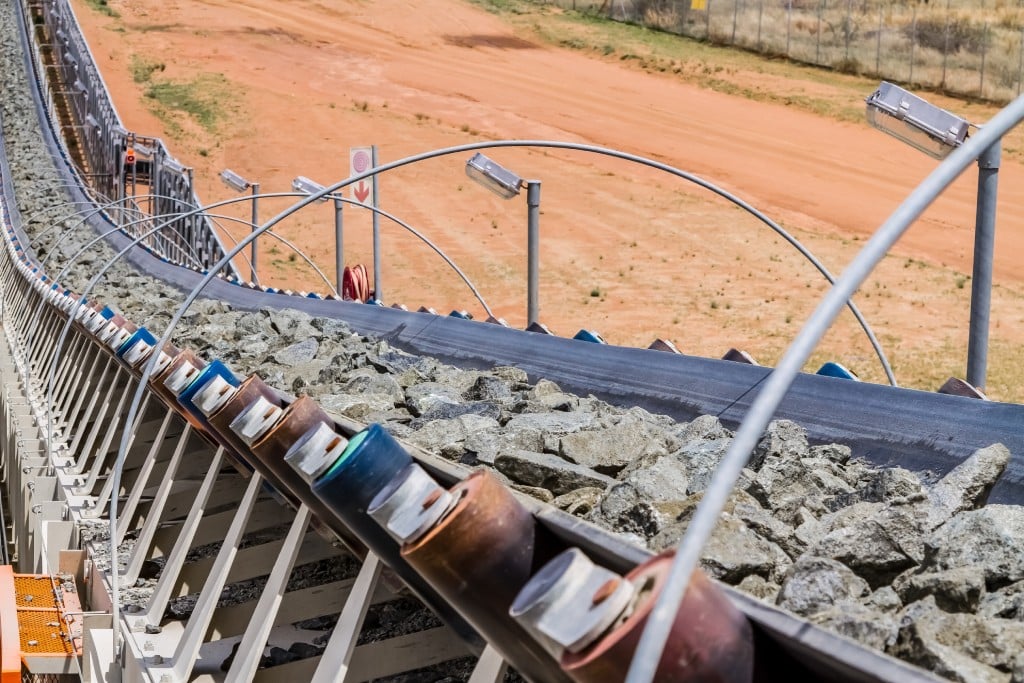Mining Conveyor Transition Technology Guide

When most people think about conveyor systems in mining, they picture drives, pulleys, or the endless movement of the belt itself. But one of the most critical aspects of conveyor design is often overlooked: the transitions.
Transition technology and transition distance are essential for smooth material handling, belt longevity, and overall system performance. Understanding how these factors work and how to design them correctly can make a significant difference in uptime and efficiency.
WHAT IS CONVEYOR TRANSITION TECHNOLOGY?
Conveyor transition technology refers to the engineered design that connects the belt with terminal equipment such as pulleys and drives, and ensures a smooth transfer into rolling components like idlers.
At the heart of this process are transition idlers, which gradually shape the belt from flat in the loading zone to troughed in the carrying zone. Proper transition technology:
- Reduces belt stress.
- Prevents spillage and material rollback.
- Extends the life of the belt and splices.
- Keeps the conveyor running smoothly with minimal interruptions.
In short, transition technology isn’t just about connecting pieces—it’s about making sure the entire system works in harmony.
UNDERSTANDING TRANSITION DISTANCE
Transition distance is the required length of the belt between the terminal pulley and the point where the belt reaches its full trough angle. If this distance is too short or too long, the belt and components are put under unnecessary strain.
Several factors determine the correct transition distance, including:
- Belt width – Wider belts typically require longer transition distances.
- Trough angle – The steeper the trough (20°, 35°, 45°), the longer the transition must be.
- Belt tension and stiffness – Heavier-duty belts need more gradual transitions to avoid stress points.
- Application – The type of material being conveyed (e.g., coal, aggregates, salt, etc.) affects how the transition is designed.
Improper transition distance can lead to premature belt wear, splice failure, edge damage, or excessive spillage. These are all costly problems that can be avoided with proper engineering.
TRANSITION REQUIREMENTS FOR DIFFERENT APPLICATIONS
Every mining application is unique, which is why transition design can’t be standardized across the board. For example:
- Heavy, sharp, or abrasive material (like coal or rocks) requires longer transition distances to reduce stress and prevent belt damage.
- Lighter or finer material (like salt or frac sand) may allow for shorter transitions, but care must still be taken to prevent spillage and belt stress.
By tailoring transitions to specific applications, operators can maximize both performance and belt life.
WRC’S APPROACH TO TRANSITION DESIGN
At West River Conveyors, we understand that transitions are where many conveyor problems begin. That’s why we engineer transition designs with each customer’s specific application in mind.
Whether you’re designing a new conveyor or retrofitting an existing one, our team ensures that transition distances are correctly calculated and that the right transition technology is in place. This balance of belt longevity, material handling efficiency, and overall system reliability is central to our approach.
CUSTOM SOLUTIONS FOR COMPATIBILITY & PERFORMANCE
No two mining operations are exactly alike, and no two conveyor systems are either. WRC specializes in customizing transition solutions that integrate seamlessly with new equipment as well as older, legacy systems. If a current transition is causing issues such as belt stress, spillage, or excessive wear, we can re-engineer the design to solve those problems and improve performance.
PARTNER WITH WRC FOR TRANSITION EXPERTISE
Transition technology and transition distance may not be the most visible parts of a conveyor system, but they are among the most important. By getting them right, you protect your belt, extend component life, and ensure consistent material flow.
At West River Conveyors, we have the expertise to design transitions tailored to your application, whether for new systems or retrofits. If you’re facing conveyor transition challenges, we can help.
Contact West River Conveyors today for a consultation on a transition design that keeps your conveyor running at peak performance.

